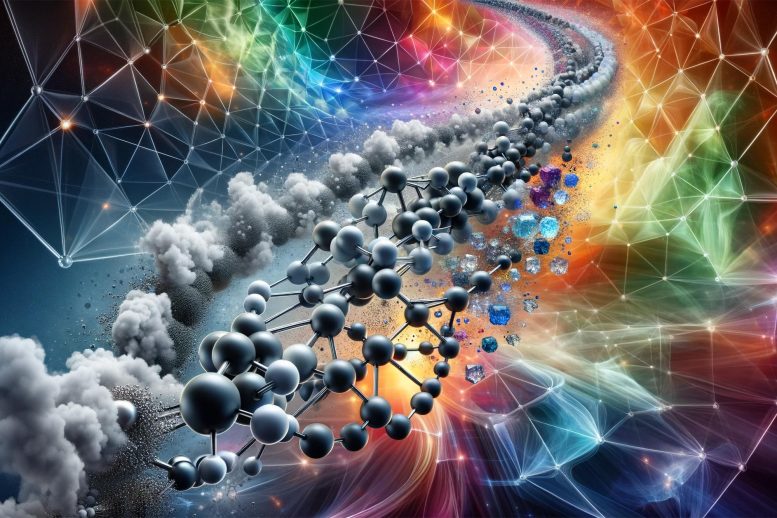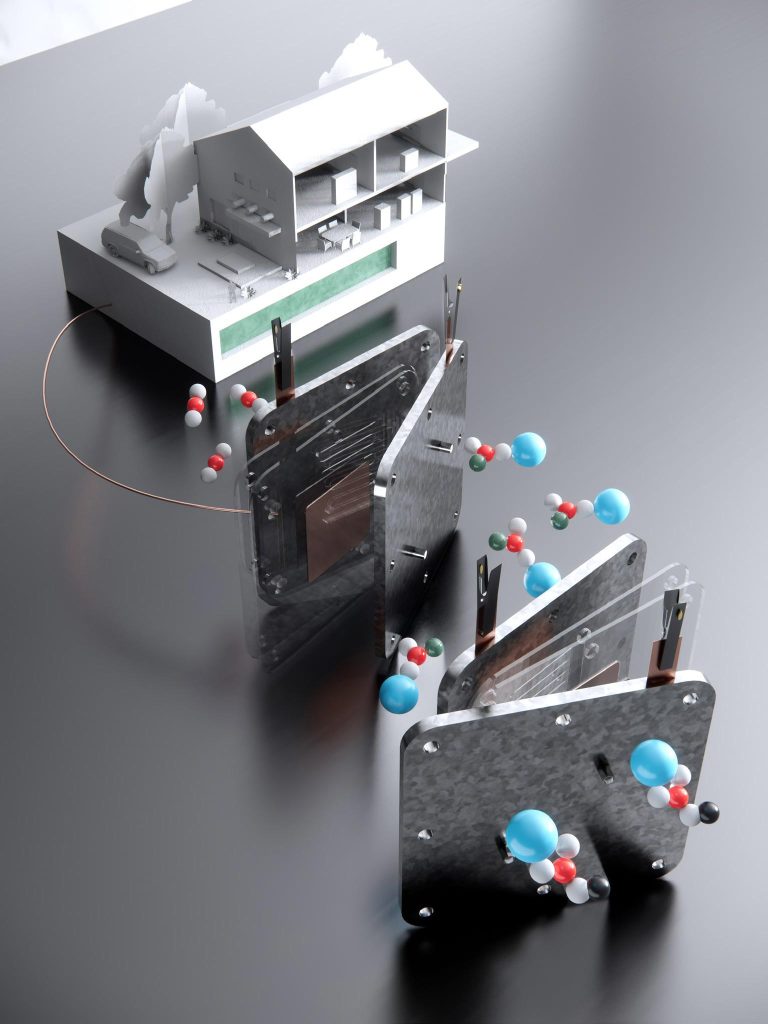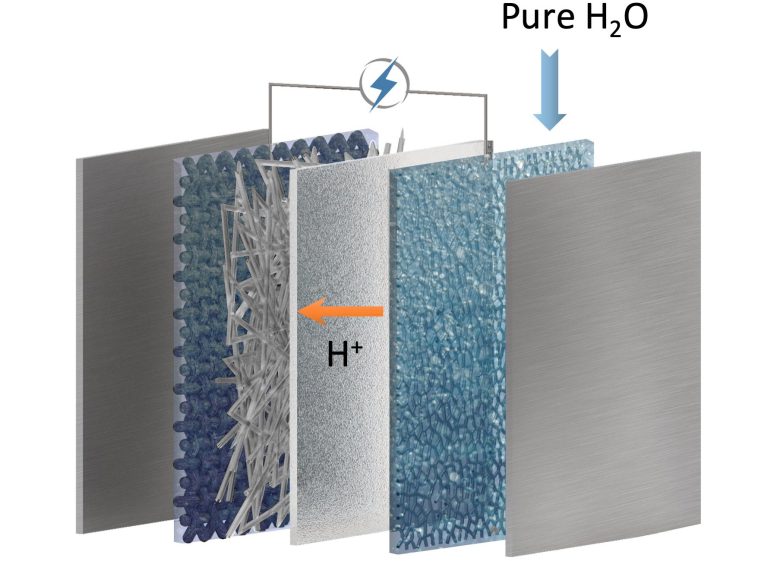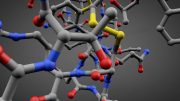
A breakthrough by MIT and Harvard scientists allows efficient conversion of carbon dioxide into stable, safe formate, potentially replacing fossil fuels and suitable for long-term storage and electricity generation.
The approach directly converts the greenhouse gas into formate, a solid fuel that can be stored indefinitely and could be used to heat homes or power industries.
The search is on worldwide to find ways to extract carbon dioxide from the air or from power plant exhaust and then make it into something useful. One of the more promising ideas is to make it into a stable fuel that can replace fossil fuels in some applications. But most such conversion processes have had problems with low carbon efficiency, or they produce fuels that can be hard to handle, toxic, or flammable.
Breakthrough in CO2 to Fuel Conversion
Now, researchers at MIT and Harvard University have developed an efficient process that can convert carbon dioxide into formate, a liquid or solid material that can be used like hydrogen or methanol to power a fuel cell and generate electricity. Potassium or sodium formate, already produced at industrial scales and commonly used as a de-icer for roads and sidewalks, is nontoxic, nonflammable, easy to store and transport, and can remain stable in ordinary steel tanks to be used months, or even years, after its production.

Rendering shows 3 parts as if on a grey table: a white model house on top; a fuel cell sandwiched in between two metal plates with spherical molecules floating around it; and on bottom is the electrolyzer, which looks similar to the fuel cell and has molecules floating around it. Credit: Shuhan Miao, Harvard Graduate School of Design
The new process, developed by MIT doctoral students Zhen Zhang, Zhichu Ren, and Alexander H. Quinn; Harvard University doctoral student Dawei Xi; and MIT Professor Ju Li, is described this recently in an open-access paper in Cell Reports Physical Science. The whole process — including capture and electrochemical conversion of the gas to a solid formate powder, which is then used in a fuel cell to produce electricity — was demonstrated at a small, laboratory scale. However, the researchers expect it to be scalable so that it could provide emissions-free heat and power to individual homes and even be used in industrial or grid-scale applications.
Improved Efficiency and Practicality
Other approaches to converting carbon dioxide into fuel, Li explains, usually involve a two-stage process: First the gas is chemically captured and turned into a solid form as calcium carbonate, then later that material is heated to drive off the carbon dioxide and convert it to a fuel feedstock such as carbon monoxide. That second step has very low efficiency, typically converting less than 20 percent of the gaseous carbon dioxide into the desired product, Li says.
By contrast, the new process achieves a conversion of well over 90 percent and eliminates the need for the inefficient heating step by first converting the carbon dioxide into an intermediate form, liquid metal bicarbonate. That liquid is then electrochemically converted into liquid potassium or sodium formate in an electrolyzer that uses low-carbon electricity, e.g. nuclear, wind, or solar power. The highly concentrated liquid potassium or sodium formate solution produced can then be dried, for example by solar evaporation, to produce a solid powder that is highly stable and can be stored in ordinary steel tanks for up to years or even decades, Li says.

An electrolzyer configuration with a bicarbonate cathode, intermediate buffer layer, cation exchange membrane and a water anode. Credit: Shuhan Miao, Harvard Graduate School of Design
Several steps of optimization developed by the team made all the difference in changing an inefficient chemical-conversion process into a practical solution, says Li, who holds joint appointments in the departments of Nuclear Science and Engineering and of Materials Science and Engineering.
Conversion Process and Applications
The process of carbon capture and conversion involves first an alkaline solution-based capture that concentrates carbon dioxide, either from concentrated streams such as from power plant emissions or from very low-concentration sources, even open air, into the form of a liquid metal-bicarbonate solution. Then, through the use of a cation-exchange membrane electrolyzer, this bicarbonate is electrochemically converted into solid formate crystals with a carbon efficiency of greater than 96 percent, as confirmed in the team’s lab-scale experiments.
These crystals have an indefinite shelf life, remaining so stable that they could be stored for years, or even decades, with little or no loss. By comparison, even the best available practical hydrogen storage tanks allow the gas to leak out at a rate of about 1 percent per day, precluding any uses that would require year-long storage, Li says. Methanol, another widely explored alternative for converting carbon dioxide into a fuel usable in fuel cells, is a toxic substance that cannot easily be adapted to use in situations where leakage could pose a health hazard. Formate, on the other hand, is widely used and considered benign, according to national safety standards.
Technical Improvements
Several improvements account for the greatly improved efficiency of this process. First, a careful design of the membrane materials and their configuration overcomes a problem that previous attempts at such a system have encountered, where a buildup of certain chemical byproducts changes the pH, causing the system to steadily lose efficiency over time. “Traditionally, it is difficult to achieve long-term, stable, continuous conversion of the feedstocks,” Zhang says. “The key to our system is to achieve a pH balance for steady-state conversion.”
To achieve that, the researchers carried out thermodynamic modeling to design the new process so that it is chemically balanced and the pH remains at a steady state with no shift in acidity over time. It can therefore continue operating efficiently over long periods. In their tests, the system ran for over 200 hours with no significant decrease in output. The whole process can be done at ambient temperatures and relatively low pressures (about five times atmospheric pressure).
Another issue was that unwanted side reactions produced other chemical products that were not useful, but the team figured out a way to prevent these side reactions by the introduction of an extra “buffer” layer of bicarbonate-enriched fiberglass wool that blocked these reactions.
The team also built a fuel cell specifically optimized for the use of this formate fuel to produce electricity. The stored formate particles are simply dissolved in water and pumped into the fuel cell as needed. Although the solid fuel is much heavier than pure hydrogen, when the weight and volume of the high-pressure gas tanks needed to store hydrogen is considered, the end result is an electricity output near parity for a given storage volume, Li says.
Potential Applications
The formate fuel can potentially be adapted for anything from home-sized units to large scale industrial uses or grid-scale storage systems, the researchers say. Initial household applications might involve an electrolyzer unit about the size of a refrigerator to capture and convert the carbon dioxide into formate, which could be stored in an underground or rooftop tank. Then, when needed, the powdered solid would be mixed with water and fed into a fuel cell to provide power and heat. “This is for community or household demonstrations,” Zhang says, “but we believe that also in the future it may be good for factories or the grid.”
“The formate economy is an intriguing concept because metal formate salts are very benign and stable, and a compelling energy carrier,” says Ted Sargent, a professor of chemistry and of electrical and computer engineering at Northwestern University, who was not associated with this work. “The authors have demonstrated enhanced efficiency in liquid-to-liquid conversion from bicarbonate feedstock to formate, and have demonstrated these fuels can be used later to produce electricity,” he says.
Reference: “A carbon-efficient bicarbonate electrolyzer” by Zhen Zhang, Dawei Xi, Zhichu Ren and Ju Li, 30 October 2023, Cell Reports Physical Science.
DOI: 10.1016/j.xcrp.2023.101662
The work was supported by the U.S. Department of Energy Office of Science.









Although the fuel cell idea sounds great, especially so for remote locations with high solar flux availability; the whole idea of removing carbon dioxide just to add it back into the atmosphere later doesn’t seem to make any sense whatsoever; what would be the point of removing carbon dioxide from the atmosphere other than to sequester it for centuries?
Taking the authors at their word, they may have demonstrated a “carbon efficiency” (whatever that means) of 96%. However, that is only one step in several, using special materials such as a “‘buffer’ layer of bicarbonate-enriched fiberglass wool,” which takes energy to manufacture. I’d like to see an analysis of the net energy loss in the entire chain. So often, there are announcements of a demonstration of technically feasible processes, that never get beyond the peer-reviewed announcement because there is no analysis of the net energy efficiency (cost!) of the entire system. This is of academic interest, but I don’t think that one should get too excited about the potential of this actually solving any major problems.
Hi. PhD.freinds.when igo tobeach correctly your one and one word feeling.
Why is a mouse?
The planet has too little atmospheric CO2, not too much. Please do not be pursuing any cockamamie ideas to go reducing it.
Just look at a graph of CO2 over time. In the last 170 million years CO2 has fallen 90%, all the way down to serious semi-starvation levels of below 200ppm during recent glaciations.
Photosynthesis consumes CO2. Since photosynthesis is the beginning of the food chain for all life on earth, that makes CO2 the beginning of the food chain for all life on earth. Having it drop by 90% means that our biosphere’s total food supply has been shrinking dramatically, which means our biosphere has shrunk dramatically.
Prima facie, it looks like life on earth could well have been headed for near-term extinction, on geological time scales. Until man came along and only in the last 70 years started releasing enough of the trapped carbon to start pulling our biosphere back from the brink of starvation.
The current 400ppm is STILL semi-starvation level, and here we have these lunatics trying to reverse the recent progress in pulling the planet back from the brink of starvation. Can people please stop and think about how insane this is?
Get rid of the “naturalist” presumption that whatever is natural is good and that human impacts, being unnatural, are bad. People are not the problem. We are the solution. At least, the people who can think rationally, and conduct a proper analysis of value, instead of proceeding on fallacious assumptions like naturalism.
Does the very small warming effect of atmospheric CO2 pose a danger to the planet. Absolutely not. Any modest amount of warming is unambiguously beneficial for people and other living things. It is global cooling that poses the only actual danger, regularly burying half the planet under a mile of ice for 100,000 years at a time.
In order for the small warming effect of CO2 (about 1 deg C of temperature forcing per doubling of CO2) to be at all dangerous, it would have to be multiplied up at least several times by water vapor feedback effects.
But that would imply an unstable climate system, where perturbations tend to cause larger swings, when we know that our actual climate system is very stable. It tends to rebound quickly from such perturbations as major volcanic eruptions, for instance.
Direct evidence about multiplier effects also indicate that the earth’s “climate sensitivity” multiplier is not large, but instead is small, and is most likely less than one (meaning that perturbations get dampened rather than amplified).
Why does the IPCC claim that human increments to CO2 are dangerous? Because the funding system set up during Vice President Al Gore’s eight years as “climate czar” never gives another penny to any climate researcher who contradicts Gore’s “CO2 is imperiling the planet” line, and virtually all climate science is government funded.
$200b of 100% politicized funding can buy a whole Mt. Everest of phony science, and that is exactly what has happened.
It is easy enough to check what I am telling you. Do a search for CO2 over time, then ask yourself: did mankind come along just in time? And how come nobody ever mentions this?
Also, why do the CO2 alarmists never mention that the leading theory of climate change before global temperature ticked upwards in the late 1970’s was that it was caused by the sun, or that the 80 year grand maximum of solar magnetic activity that began in about 1920 can easily explain late 20th century warming under that solar theory of climate change?
The clincher? Look up how the CO2 alarmists try to dismiss the solar theory. They say that because solar activity maxed in the 1950s, the solar effect would have been negative after that point.
Really? When a forcing hits its maximum, that is when it starts having a cooling effect?Any smart 7th grader can figure out that that is wrong, that the day does NOT start cooling at noon. No, noon (when diurnal solar forcing is at it’s maximum) is more like the time of maximum warming.
Yet every Ph.D solar physicist and climate scientist who gets Gore-directed money (which is all of them) claims in effect that the hottest point of the day is noon. The IPCC says it. The Royal Society says it. The American Physical Society says it. Dozens of individual physicists say it.
They all pretend not to know that the waning shortwave energy-in remains above the level of longwave energy out, causing warming and rising infrared out, until late in the afternoon when solar-in finally falls below IR out and the day starts cooling.
Is it possible for every Ph.D. physicist in the climate field to honestly make the same 7th grade physics mistake? No. They are bought phony scientists. It is all lies.